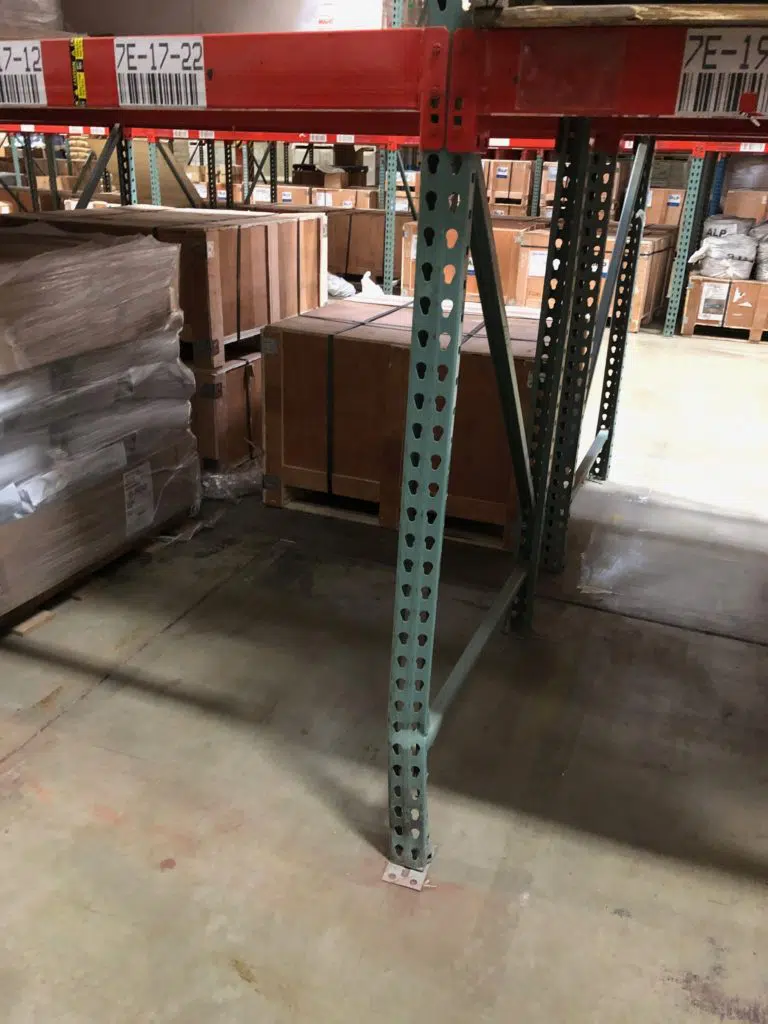There are many safety considerations when choosing, installing, and implementing new or used pallet racking to your storage area. While there are many obvious standards to meet, one of the more simple issues, (whether or not your pallet rack is plumb) can create complicated problems for your business.
Finished and installed pallet racking is almost always bolted or welded together. Because of this, columns that are leaning or bowed beyond a certain point will have a much lower capacity. This also compromises the safety of your system and increases the risk of collapse.
RMI STANDARDS
The Rack Manufacturer’s Institute (RMI) has two different ratios regarding this issue with your pallet rack frames or columns. The higher these ratios are, the more likely your racking is to fail. Those ratios are Out-of-Plumb and Out-of-Straight ratios.
Out-of-Plumb Ratio
RMI defines Out-of-Plumb ratio as follows:
“The maximum horizontal distance (inches or millimeters) from the centerline of the column at the floor to a plumb line that extends downward from the centerline of the column at the top shelf elevation divided by the vertical distance (feet or meters) from the floor to the top shelf elevation.”
The maximum Out-of-Plumb ratio for filled pallet racking is 1/2 inch per 10 feet of height. When the ratio exceeds this number, the racking must be unloaded and re-plumbed to avoid damage or failure.
Out-of-Straight Ratio
RMI defines Out-of-Straight ratio as follows:
“The maximum horizontal distance (inches or millimeters) from the centerline at any point on the column to a plumb line from any other point on the column divided by the vertical distance (feet or meters) between the two points.”
The Out-of-Straight ratio uses the same formula as Out-Of-Plumb. The limit for any two points on a column cannot exceed 0.05 inches per foot of length, which equates to the 1/2 inch per 10 feet number.
There are several factors that can cause Out-of-Plumb or Out-of-Straight issues in columns. Such issues as forklift impact, beam height adjustments, faulty connections, and pallet impact can all affect the structural integrity of your system.
RACK INSPECTION
Regular inspection is the key to preventing more costly damage or failure when it comes to plumb and straight columns. Hiring a racking professional to inspect your systems is always a good idea, but you can also utilize such tools as a plumb bob, long level, or laser lines to give yourself a better understanding of how safe your racking is.
For more information or questions on rack inspection please contact us. As always, our goal is to help you!

